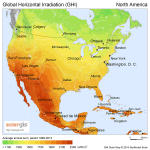I was just trying out the PoolMath app and I'm not sure how to intepret the SWG settings and recommendation under FC.
I put in my current readings:
65,800 litre pool
25 CYA
2.5 FC
3.0 Target FC
I have a Hayward TCELL940-CUL, which isn't listed in the app, but according to the Hayward website, this produces 1.45 lbs/day, so I entered that manually.
I also have a variable speed pump that I run 24/7 (mostly at a lower speed), so I entered that as well.
So with all this entered, it recommends setting my SWG Cell at 5%, which sounds really, really low.
Does this actually mean I should increase it by 5%? It's currently at 50%, so maybe increasing from 50 to 55% would bump it up to 3.0 FC?
I put in my current readings:
65,800 litre pool
25 CYA
2.5 FC
3.0 Target FC
I have a Hayward TCELL940-CUL, which isn't listed in the app, but according to the Hayward website, this produces 1.45 lbs/day, so I entered that manually.
I also have a variable speed pump that I run 24/7 (mostly at a lower speed), so I entered that as well.
So with all this entered, it recommends setting my SWG Cell at 5%, which sounds really, really low.
Does this actually mean I should increase it by 5%? It's currently at 50%, so maybe increasing from 50 to 55% would bump it up to 3.0 FC?


